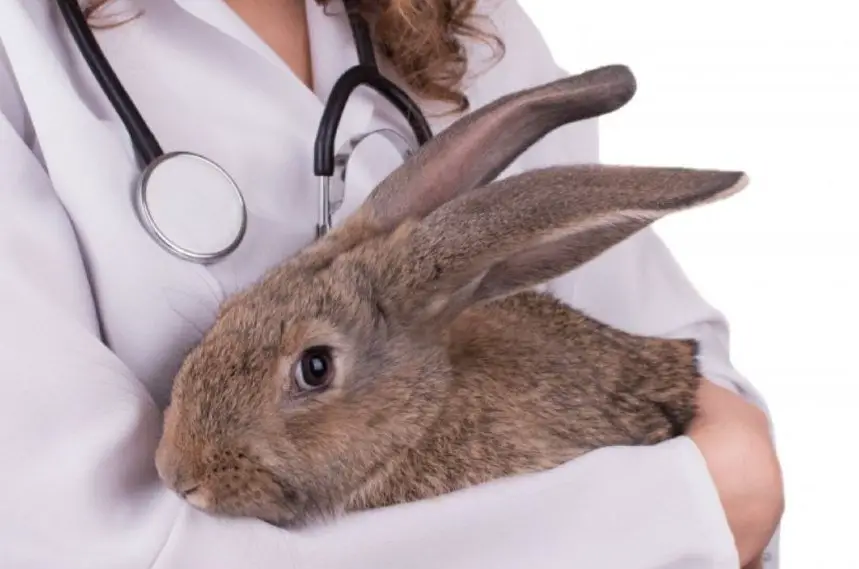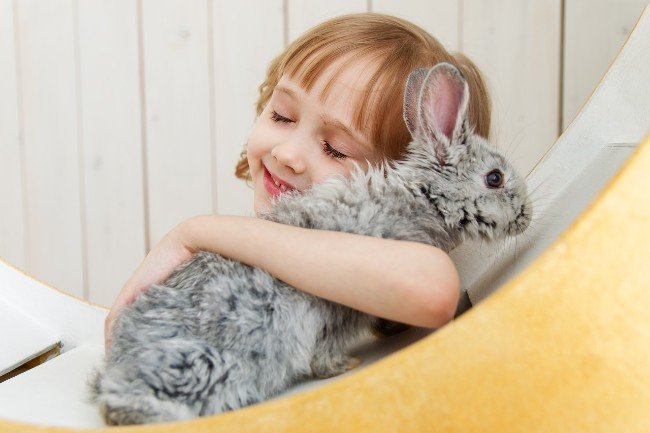Last Updated on June 12, 2023 by Emma Reynolds
Gastrointestinal stasis, or GI stasis as it is commonly known, is a disease that you absolutely must keep an eye out for in your rabbits. If you fail to spot the condition if it occurs, then your rabbit could die.
On this page, we will look at what GI stasis in rabbits is, what are the signs and how you can spot it, and, perhaps most importantly, how it can be treated.

What is GI Stasis in Rabbits?
GI stasis in rabbits is a condition that occurs when the digestive system of your rabbit has stopped working. The result is that bacteria and gas can start to build up inside of your bunny.
This can cause them an intense amount of pain. In fact, it causes them so much pain that they stop eating or drinking. It is actually the stopping drinking that could cause death for your rabbit although, of course, you probably do no want them to be in any pain either.
Therefore, it is vital that you deal with this condition as quickly as possible. In fact, you only really have about 48-hours from the onset of the condition (and them stopping drinking) to deal with the condition.
What Causes GI Stasis in Rabbits?
There is a lot that can cause GI stasis in rabbits. Perhaps the main is the fact that your rabbit is not getting a quality diet. There needs to be fiber in your rabbit’s diet. Quite a lot of it, in fact.
This is why the main diet for your rabbit will be hay. Only high quality high for rabbits.
Not only does it help to whittle your bunny’s teeth down over time, but the hay is vital for providing them with the fiber that they need. Nine times out of ten, if your rabbit is diagnosed with GI stasis, it is because they simply do not have enough hay in their diet.
Of course, this isn’t the only cause of GI stasis. Your rabbit can also suffer from the condition if they get highly stressed. For example; if they have been moved around quite a bit, or if they are coming into contact with people that aren’t treating them right. In fact, a complete change of routine can cause GI stasis to present itself in rabbits.
In addition to this, it may also be caused by the rabbit not doing enough exercise. Remember; your rabbit needs to be running around for a few hours a day.
This is partly why we recommend that you have rabbits in the house. It is going to make it so much easier on you when it comes to getting your rabbit out and about each and every day.
Finally; if your rabbit is intense pain, then this could trigger GI stasis. For example; if they have other health conditions. This means that when it comes to treating GI Stasis in rabbits, you do need to be focused on clearing up the underlying condition too.
If you fail to do this, then the GI stasis will keep coming back, and it will start to get very, very difficult to treat.
What are the Symptoms? – Signs of GI Stasis in Rabbits
The problem is that it is difficult to tell when your rabbit is suffering from GI stasis. Like most animals, they are not going to make it clear that they are in pain.
If it gets incredibly bad, you may notice that they move around a whole lot less. It is almost as if all of the energy has drained out of them. You may also notice that they develop a little bit of a hunch too. This occurs when they are in extreme pain.
There may also be a change in the rabbit droppings. In some cases, this may mean that they stop passing any stool. In others, you may notice that the shape or color of the dropping has changed.

Of course, you may also notice that they stop eating and drinking. This is a sign that something is seriously wrong, and you need to take them to a vet as soon as you can.
Remember; these symptoms can indicate conditions that are not GI Stasis. You cannot diagnose GI Stasis in rabbits on your own. It is something that can only be done by the vet.
Remember; this is the only way to guarantee that your furry friend is getting the treatment that it needs.
What are the Treatments for GI Stasis in Rabbits?
As we said before; if there is an underlying condition that has caused the GI Stasis, then this will need to be dealt with at the same time. This is one of the main reasons why you need to be going to the vet. This is the only way you can work out what is happening and why it is happening.
The main aim of any GI stasis in rabbits treatment is to get the gut working as quickly as possible. The vet will have medication that can assist with this. At the same time, they will likely give your rabbit a stool softener. This will make everything a little bit easier to pass for your bunny.
If the problem is particularly serious, then they may add some antibiotics into the mix.
At the same time, your rabbit is going to need to start getting water into their system. They need to rehydrate. Sadly, it is unlikely that they will be taking water willingly here. For these reasons, the vet may use IV fluids to help to hydrate your bunny.
However, this is going to be somewhat of a ‘last ditch’ method if they can’t find any other treatment that seems to work.
Remember; GI stasis in rabbits can be a fatal condition, however, it doesn’t need to be fatal. If you spot any of the issues that we highlighted before, then take your bunny to the vet as soon as you can.
Even if nothing is wrong, you will be glad that you did. This is a condition that really can kill in under 48-hours, and this is why immediate action is necessary.
Emma is a young, enthusiastic veterinary assistant based in Portland, Oregon. She has a natural affinity for all things fluffy, with rabbits being her absolute favorite. She got her first rabbit, a Holland Lop named Pippin, at the age of 7 and has been head over heels for them ever since. Emma holds an Associate Degree in Veterinary Science from the Portland Community College and has been working in a small animal clinic for the past 2 years.
